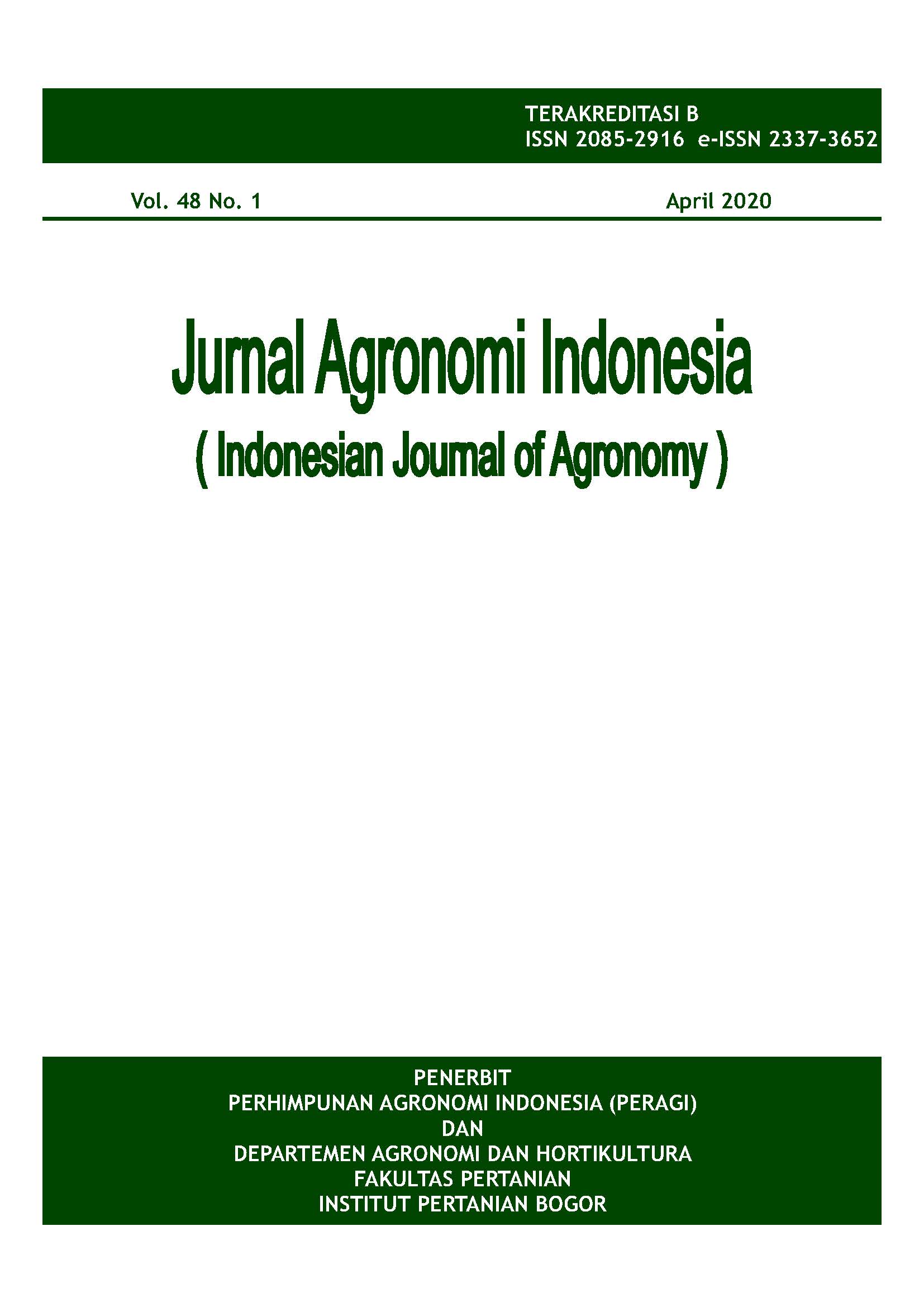Peningkatan Keefektifan Bioherbisida Berbahan Dasar Umbi Teki dengan Surfaktan dalam Menekan Perkecambahan
Abstract
Previous studies stated that the solution of purple nut sedge tuber powder has the potential as a pre-emergence bioherbicide to control broad-leaf weeds. This study aimed to: determine an effective concentration level of tuber powder solution, find out information on the types of effective surfactants in order to be mixed in tuber powder solutions in inhibiting germination, and find out the interaction between the tuber solution and the addition of surfactants towards the germination of plant seeds. This study was conducted from February to April 2019 in a greenhouse at the Cikabayan Experimental Station, IPB University. The research used a completely randomized design (CRD) with two-factors and three replications. The first factor was the type of surfactants, consisting of A0 (with no surfactant), A1 Tween 80, A2 Triethanolamine (TEA), and A3 Nonylphenol 10 (NP10) with 2% concentration. The second factor was the solution concentration, including K0 (control), K1 (45 g L-1), K2 (90 g L-1), and K3 (135 g L-1). The results showed that the tuber powder solution significantly affected several germination parameters. In addition to suppressing the percentage of germinating seeds, the solution of tuber powder could also inhibit the growth rate and increased the percentage of abnormal sprouts. The response to the concentrations used was linear and still ineffective enough for suppressing seed germination. In this study, the types of surfactants used were unable to increase the effectiveness of the tuber powder solution as a bioherbicide. Lettuce and Asystasia gangetica broad leafy plants are more sensitive to the treatment than paddy rice.
Keywords: allelopathy, Asystasia gangetica, bioherbicide, Cyperus rotundus, sustainable agriculture













